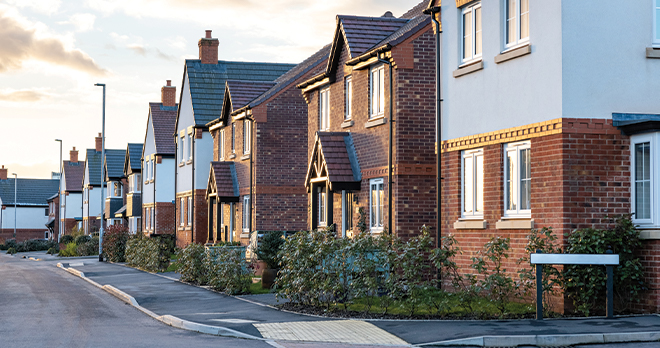What you need to know about the housing market in Oxfordshire | Legal Thinking Podcast
We spoke to a few contributors who were actually part of our Mind the Gap report into the residential property market of Oxfordshire and Bath. So our guests, or we should say interviewees for this time, were Simon McConnell, who’s a partner at Carter Jonas in Oxford; John Gebbels, who’s MD and founder of Oxon Property Search and Stuart Bradney who is a director in deal origination at Carbon Funding Consultants.
For the first part of this they just give us an overview of the market, and each of the guests agreed that Oxford remains a high priced market with little change expected.
An overview of the Oxfordshire housing market
Simon McConnell:
Oxfordshire’s extremely well placed geographically within the country you know. We’re just over an hour from London, just over an hour from Bristol, Birmingham and the south coast. So, it’s an excellent area for developers to build because we’ve got a very good diverse audience.
John Gebbels:
So Oxford’s always quite a tough market to buy in because the market is so strong. And what we’re seeing at the moment, which is particularly pronounced, is a shortage of supply and high demand and a sort of almost like a backlog of buyers who are all looking for the same thing. So that is causing prices to certainly be sustained, and if not continually be inflated.
Stuart Bradney:
Oxford is a really, is a really tough – it’s a really tough market to kind of engage in from owner/occupier and investment perspective. It’s the dynamic – it’s easy to get into London, and London is the heartbeat of the UK property market, things to do and the employment market, and people get paid more money typically working in London. I feel the Oxford market is always going to be strong.
The impact of COVID-19
However, thanks to COVID, that’s meant that more people have been bringing their hard-earned London cash to Oxfordshire.
John Gebbels:
A lot of the pandemic movers that came out of London and elsewhere in the direction of Oxford, went into rented accommodation, and many of them are still in rented accommodation ready and waiting for houses to come to market. So, it’s not at all uncommon when something that is a good house in a desirable location that’s sensibly priced, when that comes to market there, it’s not uncommon that there will be a very, very quick, immediate multiple interest leading to a number of offers, which then end up going to sealed bids or a bidding situation. So, it’s competitive still, even with the rising inflation and interest rates, there is still a huge amount of buyer demand and not enough supply into the market. So, strong market but a tricky one to buy in.
Simon McConnell:
Particularly since COVID. There’s a been a mass exodus out of London. And I think it not necessarily aimed – you know those buyers coming from London haven’t specifically been looking at new builds. I think what we’ve been able to offer in Oxfordshire for them is just a much more diverse portfolio of property, and predominantly they get better value here.
The national trends impacting upon the market
Oxfordshire is not immune to the national trends affecting the residential property market.
Simon McConnell:
I think that the general landscape, there’s still a shortage of property generally throughout the country. And I think that to a certain extent we’ve still being playing catch up in terms of the number of new builds that we’re building. So I think that the positive for – the landscape is positive – for them, but I think what will be interesting moving forward is the impact of the general state of the economy and finances, and how that pans out over the course of the next six to 12 months.
John Gebbels:
Oxford you know, has a very, very low supply of new build housing, certainly within the confines of the ring road, which creates that high demand. Other areas which have the supply of housing, i.e. supply of new build housing, the markets are slightly easier to penetrate in those areas. But in small villages where that new build supply doesn’t exist, then it’s a similar case to Oxford. So, a little bit more variety outside of the city, but still that dynamic exists in, certainly in the smaller villages.
Could lower yield from property kickstart change?
So, whilst the market may look to stay the same for some time, Stuart Bradney predicted that lower yields on some property investments could kick start some real change.
Stuart Bradney:
You know if you’ve got a property portfolio, you’ve got a number of properties that aren’t performing, creating more of a drag on personal income, and actually it’s cashflow negative, where you don’t see any capital growth and you’re not getting a yield, so why bother quite frankly? And you know, do you sell just to get rid? And in that market there’s people waiting to acquire so, you know, I feel that the strong will get stronger and the weak may unfortunately get weaker, and there will be a pull in that. Some will be caught up and grow their business strategically and be well aligned with the right advice and the right investment strategy; and others will unfortunately fall into the position whereby they’ve got no choice but to sell.
Large incorporated landlords that have been you know, that are sitting on big portfolios at well leveraged, relatively lowly leveraged but generating a good yield, that have got their affairs in order and have been organised over the course of the last 10/15 years in their structuring and following up the process, will be fine. And I think that’s absolutely fine. But the amateur landlord will not be, in the main. I think there’s too many challenges there and there’s too many obstacles to really see that. There might be ambition, there might be the desire to engage, but quite frankly I feel that the financials, the modelling just don’t make it worth it’s while.
New considerations
Everyone agrees that housebuilding is the key to a more affordable residential property sector. However there are new considerations that housebuilders need to take into account given the recent trends brought about by the cost of living crisis.
John Gebbels:
I think one of the trends that I’m certainly seeing from buyers is an increased consideration of their running costs of the property, and then that comes down to the environmental credentials. I think more and more so buyers are now looking very carefully at the energy performance of the building and also looking at what they could do to improve that for the duration of their ownership, particularly families who are planning on buying – being a property for the long term you know. 20 years of energy costs as they increase as they are at the moment, is – it’s a lot of money. So you know, I’m seeing certainly a trend of people looking at what options they have, what the current energy performance of the building is and you know; geothermal energy, ground source heat pumps, air source heat pumps, solar energy. I think buyers are looking at their options there very carefully.
Simon McConnell:
We’re finding with our smaller private developers is that they’re putting more effort in to the design and some of the eco features of the houses, with the intention of trying to appeal to an audience who will be wanting things like air source heat pumps, PV panels on the roof, things like that, just because obviously as the cost of living is rising, any of those eco measures which can bring down the cost of running of home are all important.
The impact of tech
And beyond the cost of living crisis to the future of the residential property market. John Gebbels had some interesting ideas about the possibilities he’s seen through technology.
John Gebbels:
The technology that’s available now in video footage of properties as people are looking to buy in Matterport tours which enable you virtually to walk around the property room by room and look up, look down, look side to side and they reveal an incredible amount of information, and that makes it a lot easier for people to buy or to investigate properties from afar. So, technology can only take you so far, but it’s certainly enabling people to get a much better insight into properties that are available for sale in advance of seeing them, which you know in a competitive market is good, because people can get a sense of the property. The days of people coming and doing a first viewing then perhaps coming back a week later with their partner or their family having another viewing, then going away mulling it over, researching catchment areas or transport links, and then making an offer are gone.
The view from our Oxford team
We also spoke to our very own Gurpreet Sawhney who’s a Partner in property conveyancing in our Oxford office about how he sees the Oxford market and also just to get his thoughts on some of the things raised by the other contributors.
Gurpreet Sawhney:
Despite many prophesising the end of the market due to Brexit, the pandemic and the end of the Stamp Duty holiday, the UK’s residential property market remains consistent, solid and trustworthy.
The speed of the vaccination programme, the relaxation of social distancing measures and the government’s support for both jobs and the housing market in 2020 and 2021 has kept confidence really high. And the price of a typical home is now some 45,000 odd higher than in February 2020. That’s the month before the pandemic struck.
Oxford absolutely matches with the rest of the country. I mean it’s a market that has been and, in my opinion, always will remain very strong for a number of reasons. Primarily where it’s located, being very close to London, Bristol, Birmingham. It’s a good place to develop and it’s a diverse market.
The challenge around supply and affordability of housing, in my opinion, remains a primary goal on the domestic, political agenda. The government’s facing a huge task to be on target for their goal of building 300 new – 300,000 new homes per year by the mid-2020’s. Efforts to boost supply need to focus on encouraging a greater variety of homes to suit a greater variety of end user needs, such as purpose build to rent, attractive specialist, later living household and shared ownership. So there’s a lot to be done, but certainly as I said, there’s a lack of supply for the growing demand.
So the climate crises you know, it remains the biggest issue on the government’s property reform agenda. There’s likely to be an increase in demand for more energy efficient, lower carbon sustainable homes, already more so than there is right now. In fact the major UK banks have started turning their attention to this anticipated growth in demand. In 2021 there were five new lenders that entered the green mortgage market. There are now 14 green mortgage lenders in the UK with a total of 26 product offerings, compared with just 3 that were available prior to COVID. So it remains to be seen whether this growing interest will create a green premium for energy efficient homes, or a brown discount for poor performing homes.
Technology – obviously we live in a smartphone world, there is a potential to grow and develop, conveyancing apps and artificial intelligence. In fact government have issued grants of £30 million to artificial intelligent projects in the service industry that deliver online legal advice to people who have no access to lawyers. And there’s many companies and universities particularly that are being given grants to develop such technology. Potentially cryptocurrency mortgages as well. So there are companies that are planning to launch the currencies enabling banks to issue mortgage stable coin on their network to improve the movement of mortgage funds. So there’s lots happening in the industry and certainly there have been some major improvements.
Oxfordshire continues to have one of the strongest regional economies in the UK. Foreign direct investment is one of the biggest drivers of success for the area, and the east/west rail project will re-establish a rail link between Cambridge and Oxford and transform the regions’ connectivity. This is one of the most important infrastructure projects in the South East and will be a huge boost for the region’s accessibility. In addition to that, the Oxford to Cambridge arc has been widely touted as one of the greatest opportunities for economic growth in the UK and could with the right infrastructure, deliver over 1 million much needed new homes. There is an emerging trend for more strategic planning such as the Oxfordshire housing deal which is committed to building 100,000 new homes by 2031 to address the housing crisis and support the expected economic growth.
Read our recent property market report
Find out more about the latest trends in the property markets of Bath and Oxfordshire.
The challenges facing the housing market have been well documented. But essentially not enough accessible housing is being built in the right areas to match the population growth trajectory. Nowhere is this more evident than in the regions we operate in.

Subscribe to Legal Thinking
Want to hear more from our podcast?
Find out where you can subscribe and check our our back catalogue right here on our website.








